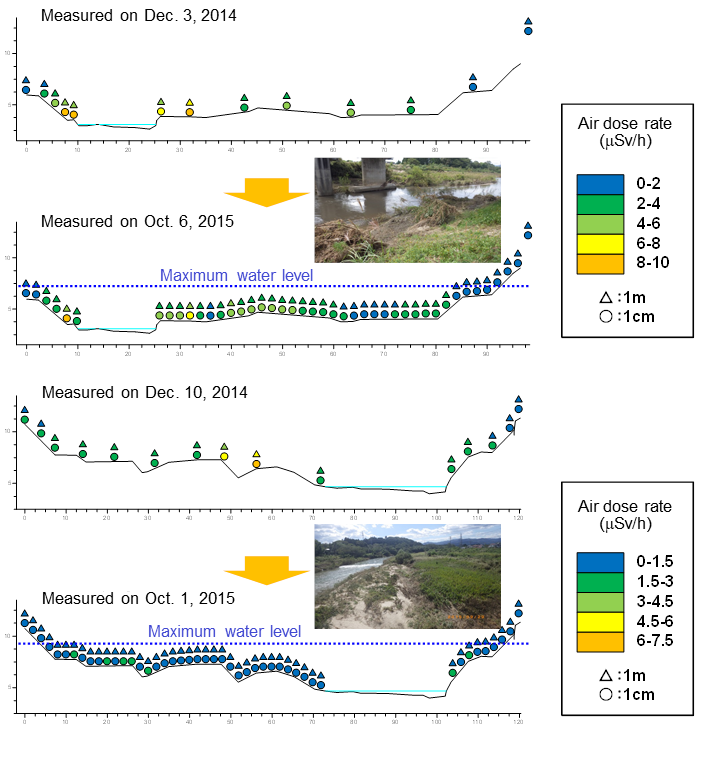Radioactivity Dynamics in River System
(2015)
QDo dose rates in riverbeds increase after heavy rains? 【Changes of air dose rate in heavy rain】
AIn September 2015, many of the riverbeds in the Kanto and Tohoku areas were flooded by heavy rain. Even at that time, increases in dose rates were not observed in these areas. In some rivers, dose rates decreased rather drastically.

Fig.1 Change of air dose rates before and after the Kanto-Tohoku heavy rain in September 2015
Upper two figures: riverbed under the Ukedo River bridge on the Ukedo River
Lower two figures: riverbed under the Takase River bridge on the Takase River
- In riverbeds of the Ukedo River system, Fukushima Prefecture, air dose rates in September 2015 (just after the Kanto-Tohoku heavy rain) were compared with those in December 2014.
- In the riverbeds of the main stream of the Ukedo River, increases of air dose rates were not observed, because the amount of sediment deposited was small due to the Ogaki dam upstream.
- In the riverbeds of the Takase River (tributary of the Ukedo River without dams), sediment containing low concentrations of cesium flowed from the upstream and was deposited. Therefore, dose rates drastically decreased.
- Consequently, dose rates in riverbeds tend to decrease from a long-term view.
Related articles
- Do dose rates in riverbeds increase after heavy rains? 【Difference between high and low water channels】
- Do dose rates in riverbeds increase after heavy rains? 【Tendency of the change of air dose rate】
- When it rains, does radioactive cesium flow out of forests with soil? 【Tendency of the change of the 137Cs concentration in soil】
- When it rains, does radioactive cesium flow out of forests with soil? 【Relationship between the coverage rate of forest floor and flowing rate from forests】
- How much did the amount or the concentration of Cs released to river water by forest fire? How did them change by time?
